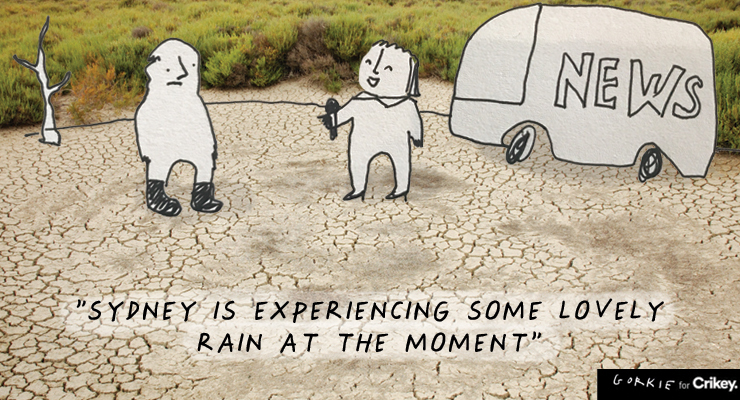
This week’s closure of WIN local TV bulletins across Queensland, Victoria and parts of southern New South Wales is the latest evidence that traditional mass media cannot (or will not) meet the news needs of Australia’s local communities.
Worse, the focus by governments on propping them up with one-off grants or by going the heavy with big tech on their behalf is getting in the way of communities rebuilding the modern news infrastructure that they actually need.
It’s the old story of an industry in transition: the last skill the traditional declining players lose is the ability to rent-seek. Their most earnest desire? Lock out the new players threatening to replace them.
Ahead of WIN’s July 1 return to its historic links with the Nine network, the regional broadcaster announced on Monday that capital city-based state-wide bulletins would replace local news in Mackay, Bundaberg, Hervey Bay, Orange, Dubbo, Wagga Wagga, Griffith and Albury-Wodonga.
It looks like adding about 50 journalism and production job losses to the jobs lost in the Nine-WIN realignment, on top of those lost at Nine when it announced back in March that it would close most of its regional bureaus as part of the deal. About 40 out of these 50 Nine employees have been redeployed.
(In related not-so-terrible news, WIN will also stop broadcasting Sky News into regional areas, although Lachlan Murdoch, running the US Fox network WFH in Bellevue Hill, is said to be attempting to place the free-to-air feed elsewhere.)
The WIN announcement brought a touch of performative regulatory push-back, with news that the regional network had received $4.5 million from the federal government’s $49 million media bailout Public Interest News Gathering (PING) fund last year. Nine received $4 million. Want to know what for? Silly you: that’s confidential!
However, the PING guidelines mandate that companies getting the money “maintain existing levels of journalism production and distribution during the grant period”. Shrug. For WIN, that’s until August 27; for Nine it’s mid-September.
The grant program was always a temporary band-aid, part of last year’s pandemic response to staunch the advertising bleeding from traditional media. It was re-purposed out of an earlier program designed to help new media players, set up in a deal with South Australian Senator Nick Xenophon to allow the old players to get bigger by eliminating the cross-media ownership rules. (Crikey received funding under the old program). The big winner out of that deal? The Nine network, which was then allowed to take over Fairfax.
Problem is, although broadcast advertising is bouncing from last year’s lows, the pandemic has acted to accelerate the now decade-long trend line of advertising dollars steering away from old media and on to the digital platforms — and it’s worse for regional media.
While the declining audiences of mass broadcasting still have some appeal for brand-building advertisers at the national level, the micro-targeting of the Facebook news feed, the “near me” of Google search, and the sectoral focus of realestate.com.au or Domain are proving far more attractive in regions and local communities.
As a result, regional news resources are replaced with a low (or no) cost pretence of localism, whether it’s the Delaware-based News Corp replacing real-life printed papers in local towns with tabs in the website of its capital city tabloids, or Southern Cross Austereo replacing local breakfast programming with networked shows across its regional Hit Network.
But here’s the good news: across regional Australia, journalists are working with communities to build new not-for-profit or locally-owned news outlets. Unintentionally, News Corp helped this along when it released a cohort of skilled journalists and editors in last year’s masthead closures. Many of them turned to building genuinely local news media for their communities. (Crikey wrote about some of these last year. Most are still going strong and others have kicked off.)
Meanwhile, Australian Community Media, spun out of the Nine-Fairfax merger, is attempting to manage the digital transition with a local focus.
Urban communities have been less fortunate. While independent news media have emerged in some inner cities (and News Corp has kept publishing its titles in high-income areas like Sydney’s Mosman), the news needs of local communities within cities are largely confined to Facebook groups with their inevitable focus on road works, dog poo and complaints about outsiders.








I live in rural Australia and I always knew this was a $cotty scheme that gifts his government’s donors/supporters. Return the money to the taxpayer.
PS – Don’t hold your breath.